
June gardeners in USDA zones 9-10 are navigating the increasing heat while still maintaining productive gardens. Spanning diverse regions from coastal Oregon to Arizona, Florida, and parts of California, zones 9-10 offer unique growing conditions that can allow for year-round gardening with proper planning and plant selection.
I’ve carefully selected 10 plants that thrive when planted in June in zones 9-10. These choices balance heat tolerance with productivity, taking advantage of the warm soil temperatures while still having enough resilience to handle summer conditions. Unlike cooler zones where June represents the peak of spring planting, in zones 9-10, June requires more strategic selection of heat-loving varieties and careful attention to water management.
So let’s dig into the perfect plants for your June garden in zones 9-10, with specific consideration for both coastal and inland growing conditions, providing you with options that will thrive regardless of your specific microclimate within these versatile growing zones!
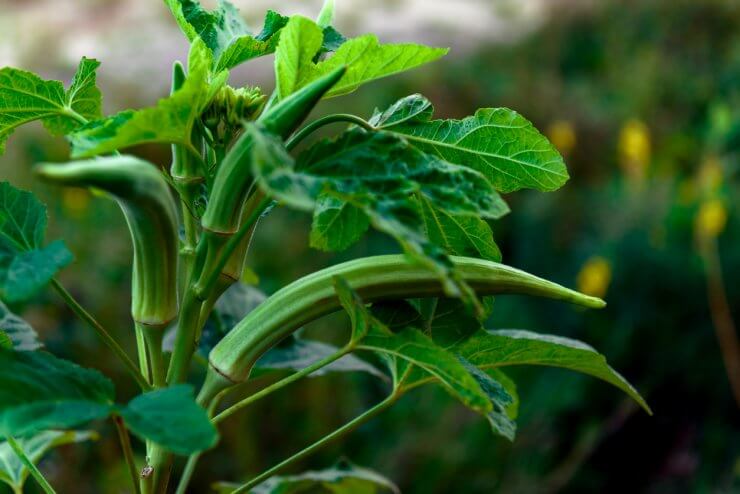
1. Okra
Okra is the undisputed champion of summer heat tolerance, making it perfect for June planting across all zones 9-10 regions. This staple of Southern and tropical cuisine actually produces better during the hottest months, thriving when many other vegetables struggle.
Recommended Varieties:
- ‘Clemson Spineless’ (55 days) – The industry standard, reliable across all zone 9-10 regions
- ‘Red Burgundy’ (55 days) – Striking purple-red pods and stems, ornamental and delicious
- ‘Emerald’ (58 days) – Excellent for coastal regions with good disease resistance
- ‘Silver Queen’ (75 days) – Extra tall variety (up to 7 feet) that excels in Arizona’s heat
Pro Tip: In coastal areas like Oregon where summer temperatures are milder, plant okra in the warmest, most protected part of your garden and use black plastic mulch to increase soil temperature. In hot inland areas of Arizona and Florida, provide afternoon shade during the most intense heat to prevent flower drop. Harvest pods when they’re 2-3 inches long for the most tender texture – larger pods quickly become woody. Regular harvesting encourages continued production throughout the season.
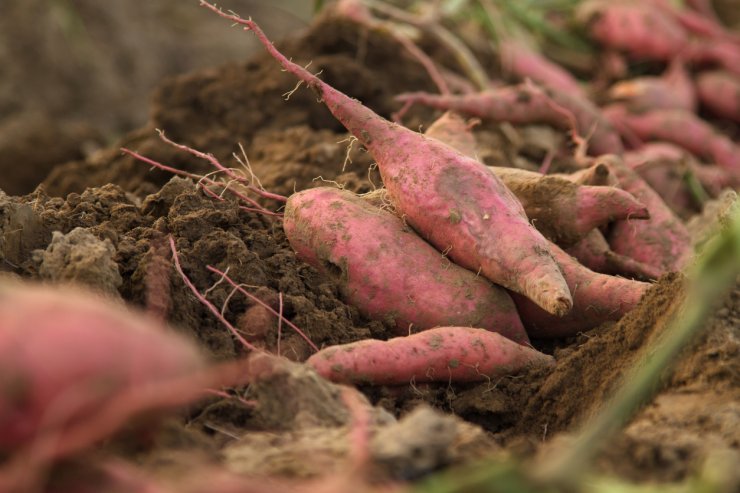
Harvested sweet potatoes in soil.
2. Sweet Potatoes
Sweet potatoes are ideal for June planting in zones 9-10, as they need the long, hot growing season to develop their nutrient-rich tubers. Unlike regular potatoes, sweet potatoes actually improve with heat and humidity.
Recommended Varieties:
- ‘Beauregard’ (100 days) – High-yielding variety adaptable to both coastal and inland regions
- ‘Georgia Jet’ (90 days) – Earlier harvest, good for coastal Oregon where seasons are cooler
- ‘Centennial’ (100 days) – Excellent disease resistance, perfect for humid Florida conditions
- ‘O’Henry’ (90 days) – White-fleshed variety that performs exceptionally well in Arizona
Pro Tip: When planting sweet potato slips, insert them at an angle rather than straight up and down, with only the top leaves exposed. This technique promotes better root development along the buried stem. In sandy soils common in Florida and parts of California, add additional compost to retain moisture. For coastal areas, choose earlier-maturing varieties and use black plastic mulch to increase soil temperature. In all areas, keep newly planted slips consistently moist until established, then reduce watering to encourage deeper root development.
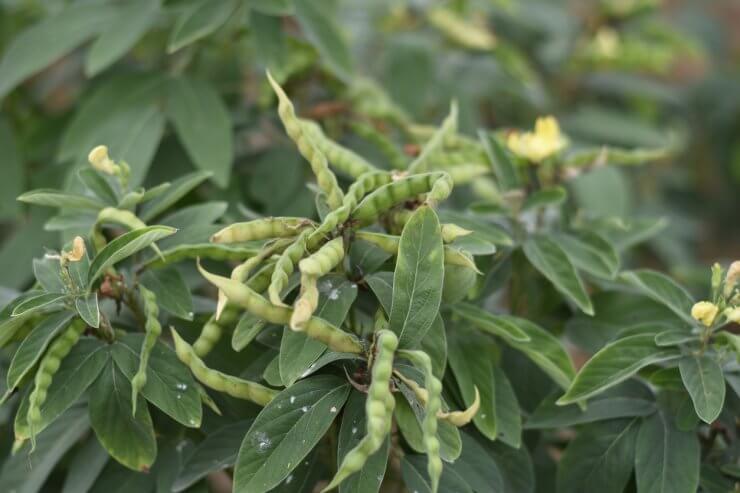
3. Southern Peas (Black-eyed Peas, Crowder Peas)
Southern peas are legumes specifically adapted to summer heat and drought, making them perfect for June planting in zones 9-10. Not only do they produce nutritious, protein-rich harvests, but they also fix nitrogen in your soil.
Recommended Varieties:
- ‘California Blackeye No. 5’ (70 days) – Widely adaptable standard variety
- ‘Mississippi Silver’ (75 days) – Exceptionally heat and drought tolerant, perfect for Arizona
- ‘Queen Anne’ (60 days) – Earlier harvest, good for coastal Oregon
- ‘Zipper Cream’ (65 days) – Creamy-white peas with easy “zipping” shelling, excels in Florida humidity
Pro Tip: For maximum productivity, avoid over-fertilizing Southern peas with nitrogen, which promotes leafy growth at the expense of pod production. In coastal areas, choose early-maturing varieties and plant in your garden’s warmest location. In desert regions like Arizona, provide afternoon shade during the most intense heat and mulch heavily to conserve moisture. Regular harvesting of mature pods encourages continued production. Consider succession planting every 3-4 weeks through July for continuous harvests into fall.
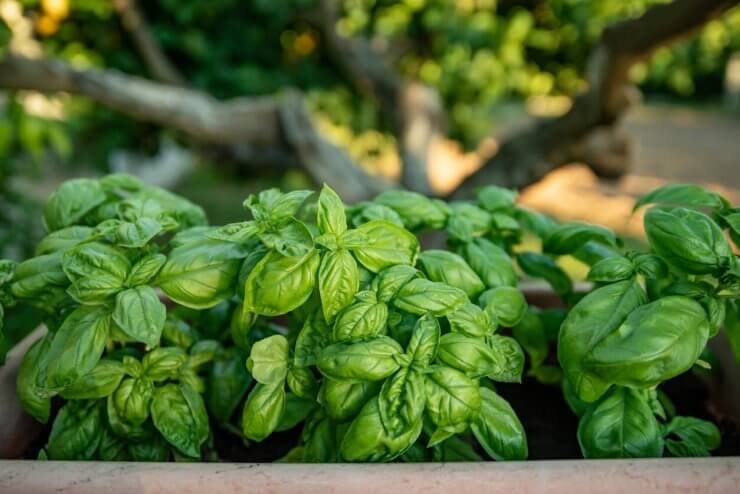
4. Basil
Basil thrives in the heat of zones 9-10, making June an excellent planting time for this aromatic herb. With proper care, basil planted in June will provide harvests well into fall in these warm growing zones.
Recommended Varieties:
- ‘Genovese’ (68 days) – Classic Italian basil, excellent in all zone 9-10 regions
- ‘Thai’ (63 days) – Spicy variety that handles extreme heat well, perfect for Arizona
- ‘African Blue’ (perennial) – A perennial variety that excels in Florida’s humidity
- ‘Spicy Globe’ (70 days) – Compact bush form with small leaves, ideal for coastal gardens
Pro Tip: In coastal areas like Oregon and Northern California, plant basil in full sun for maximum essential oil production. In desert regions like Arizona, provide afternoon shade to prevent leaf scorch. Pinch off flower buds as soon as they appear to extend the harvest season and prevent bitter flavor development. Unlike many herbs, basil should be harvested in the morning when essential oil concentration is highest. Water at the base of plants rather than on foliage to prevent disease issues in more humid regions like Florida and coastal areas.
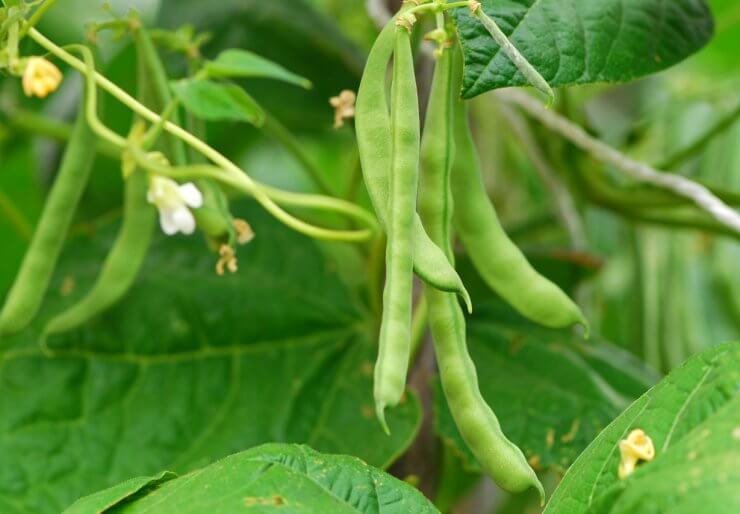
5. Bush Beans
Bush beans planted in June will produce a bountiful harvest in zones 9-10 before the most intense heat of late summer sets in, especially if heat-tolerant varieties are selected.
Recommended Varieties:
- ‘Provider’ (50 days) – Heat-tolerant and disease-resistant across all zone 9-10 regions
- ‘Contender’ (49 days) – Very early maturing for quick harvest before extreme heat
- ‘Jade’ (60 days) – Heat-resistant variety that produces even during hot spells
- ‘Volunteer’ (54 days) – Excellent performance in coastal regions
Pro Tip: In desert regions like Arizona, set up temporary shade cloth that filters 30-40% of sunlight during the hottest part of summer to extend your bean production. In coastal regions, choose varieties with good disease resistance to handle cooler, damper conditions. Plant bush beans slightly farther apart (6 inches rather than 4) in all zone 9-10 regions during summer planting to improve air circulation and reduce disease pressure. Water in the morning at soil level to keep foliage dry. Mulch heavily in all regions to maintain consistent soil moisture, which is essential for pod development.
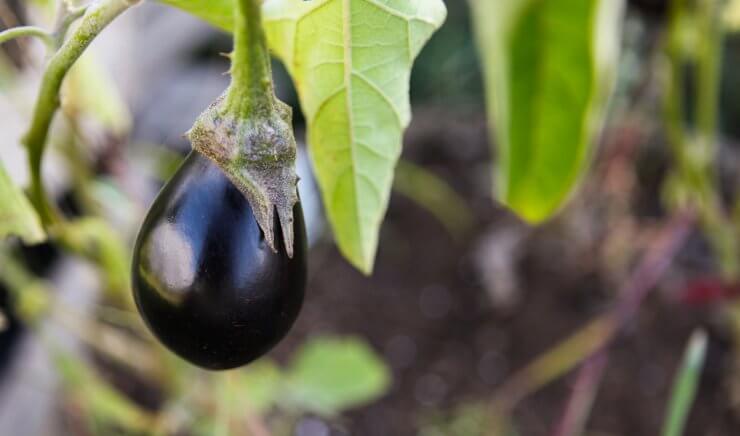
6. Eggplant
Eggplant loves the heat of zones 9-10, making June an ideal planting time as soil temperatures have thoroughly warmed. These beautiful vegetables will produce abundantly with proper care throughout summer and into fall.
Recommended Varieties:
- ‘Black Beauty’ (80 days) – Classic large oval fruit, reliable in most zone 9-10 regions
- ‘Ichiban’ (60 days) – Japanese type with slender fruit, earlier harvest
- ‘Florida Market’ (85 days) – Heat-tolerant variety bred for humid conditions, perfect for Florida
- ‘Fairy Tale’ (65 days) – Compact plants with decorative striped miniature fruits
Pro Tip: In all zone 9-10 regions, eggplants are heavy feeders—work compost and a balanced organic fertilizer into the soil before planting June transplants. For flea beetle protection (a common eggplant pest), use floating row covers until plants begin flowering, then remove to allow pollination. Support plants with stakes or cages, as June-planted eggplants often grow larger and produce heavier yields than spring-planted ones. In desert regions like Arizona, provide afternoon shade during the hottest part of summer and water deeply but infrequently to encourage deep root growth.
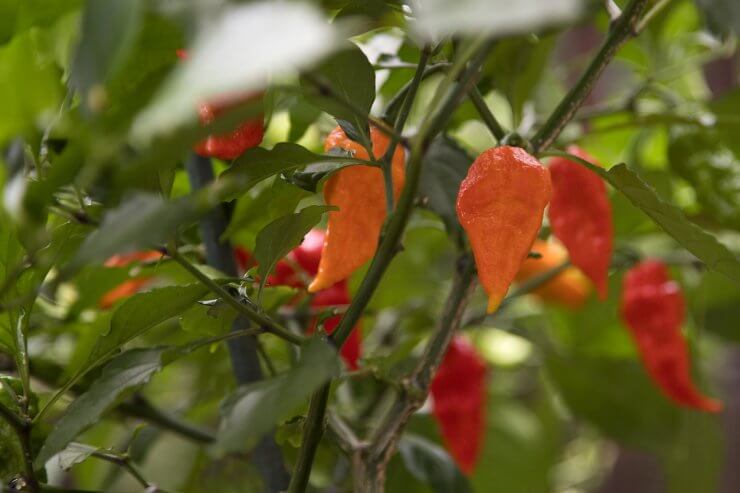
Ghost peppers growning on the vine
7. Hot Peppers
Hot peppers thrive in the heat that intimidates many other plants, making them perfect for June planting in zones 9-10. Unlike sweet bell peppers, which may struggle with pollination in extreme heat, many hot peppers continue producing throughout summer.
Recommended Varieties:
- ‘Jalapeño’ (75 days) – Reliable classic that produces well in all zone 9-10 regions
- ‘Serrano’ (80 days) – Extra heat tolerance, excellent for Arizona and Florida
- ‘Cayenne’ (70 days) – Versatile and productive across varying microclimates
- ‘Thai Bird’ (85 days) – Extremely heat tolerant with ornamental upright fruits
Pro Tip: For better production in summer heat, spray pepper flowers weekly with a solution of 1 tablespoon Epsom salt dissolved in 1 gallon of water. This provides magnesium that helps with fruit set during high temperatures. In coastal areas like Oregon, choose faster-maturing varieties and use black plastic mulch to increase soil temperatures. In extreme heat regions like Arizona, plant peppers where they receive morning sun but afternoon shade, especially from the western exposure. Water deeply but infrequently to encourage deep root systems, and mulch heavily to maintain consistent soil moisture.

8. Lemongrass
Lemongrass is a tropical herb perfectly suited for June planting in zones 9-10. This aromatic grass adds a citrusy flavor to Southeast Asian cuisine and makes an excellent tea, while also serving as an ornamental in the garden.
Recommended Varieties:
- ‘East Indian’ (Cymbopogon flexuosus) – More intense citrus flavor, wider leaves
- ‘West Indian’ (Cymbopogon citratus) – Traditional culinary variety, narrower stalks
- Both varieties perform well across all zone 9-10 regions, with no significant differences in regional adaptation
Pro Tip: In all zone 9-10 regions, lemongrass forms large clumps over time, so give it plenty of space (at least 24 inches in all directions). For coastal areas where growth may be slightly slower, start with larger plants rather than divisions. In hot, dry regions like Arizona, lemongrass appreciates regular deep watering but can tolerate some drought once established. Harvest outer stalks by cutting at ground level or slightly below, which encourages new growth. In Florida and other humid areas, ensure good air circulation around plants to prevent fungal issues. Lemongrass can be grown as a perennial throughout zones 9-10.
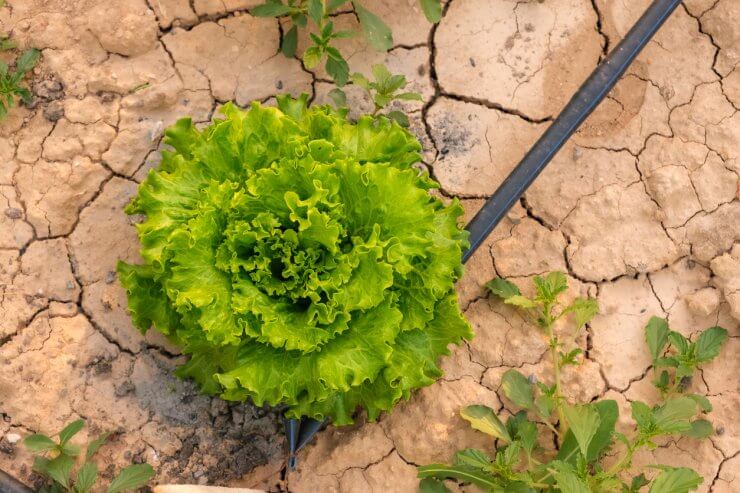
Green Lettuce
9. Heat-Tolerant Lettuce
With careful variety selection and strategic planting, lettuce can be grown in June in zones 9-10, providing fresh salad greens even as temperatures rise.
Recommended Varieties:
- ‘Jericho’ (60 days) – Heat-tolerant romaine developed in Israel’s hot climate
- ‘Black Seeded Simpson’ (45 days) – Quick-maturing loose-leaf for summer harvest
- ‘Red Sails’ (45 days) – Heat-resistant red loose-leaf variety
- ‘Summer Crisp’ types like ‘Nevada’ (48 days) – Specifically bred for heat tolerance
Pro Tip: For June lettuce planting in zone 9-10, location is crucial. Plant in areas that receive morning sun but afternoon shade, especially in hot inland regions like Arizona. In all regions, sow seeds slightly deeper (about 1/2 inch rather than 1/4 inch) to access cooler soil. Use shade cloth (40-50%) during the hottest part of the day in all zone 9-10 regions. Water consistently to prevent bitterness, ideally in the morning. Coastal Oregon growers can succeed with a wider variety of lettuce types due to cooler summer temperatures, while inland growers should focus exclusively on heat-resistant varieties. Harvest in the early morning when leaves are crisp and sweet.
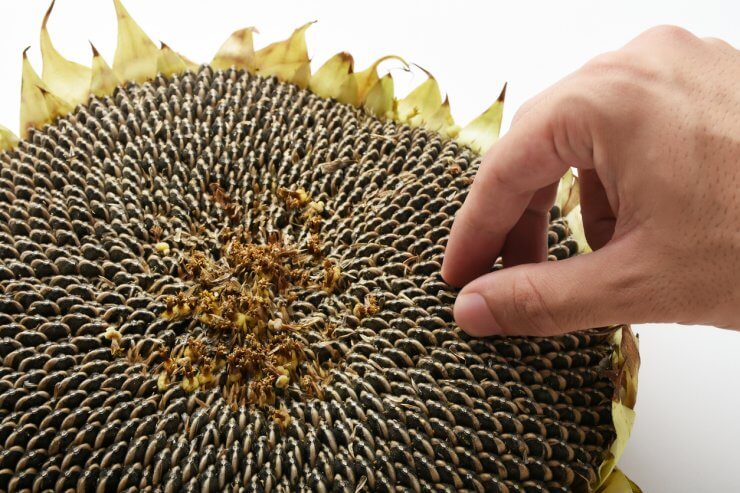
Gardener handpicking sunflower seeds from a dried seed head
10. Sunflowers
Edible sunflowers planted in June in zones 9-10 will reward you with beautiful blooms by late summer and delicious seeds by fall. These varieties attract pollinators and birds while providing a nutritious garden harvest.
Recommended Varieties:
- ‘Mammoth Grey Stripe’ (85 days) – The gold standard for edible sunflower seeds. Grows up to 12 feet tall with giant flower heads and large, striped seeds perfect for roasting.
- ‘Titan’ (75 days) – Bred for massive seed size, this variety produces some of the largest edible seeds of any sunflower. Plants can reach 12 feet tall with 24-inch blooms!
- ‘Super Snack Mix’ (75 days) – Specifically cultivated for hullability and snacking. Produces lots of plump, easy-to-shell seeds on sturdy, 6–8 foot stalks.
- ‘Sunzilla’ (85 days) – A hybrid known for strong stems, huge heads, and abundant, high-quality seeds. Great for both human and bird consumption.
Pro Tip: In all zone 9-10 regions, direct sow sunflower seeds 1 inch deep and 6 inches apart, thinning to 12-18 inches apart once seedlings are established. In coastal regions, choose earlier-maturing varieties to ensure blooming before fall rains. In hot desert regions like Arizona, sunflowers actually thrive in the heat but need consistent deep watering, especially during flower formation. To deter birds from eating newly planted seeds, cover rows with floating row cover until seedlings are 3-4 inches tall. For a longer bloom period, plant a new batch of seeds every 2-3 weeks through July.
June Garden Chores for Zones 9-10
Beyond planting, June requires attention to specialized care techniques for your established garden:
- Mulch heavily around all plants to conserve moisture and suppress weeds – crucial in all zone 9-10 regions but especially in hot, dry areas like Arizona.
- Set up shade cloth (30-50%) for heat-sensitive crops during the most intense afternoon sun.
- Install drip irrigation or soaker hoses to efficiently deliver water directly to plant roots.
- Monitor for pests daily – summer heat accelerates their life cycles, particularly in humid regions.
- Harvest frequently, preferably in the morning when vegetables are at their freshest.
- Keep up with succession planting of heat-tolerant crops for continuous harvests.
- Consider strategies for fall garden planning – in zones 9-10, fall is a second spring!
- Prune tomato plants to remove diseased foliage, which spreads quickly in summer heat and humidity.
- Add compost to garden beds being prepared for late summer/fall planting.
- Protect yourself from the heat – garden early in the morning or late in the evening.
June planting in zones 9-10 is about working with the increasing heat rather than fighting against it. By selecting heat-loving crops and providing appropriate care, you can maintain a productive garden even as temperatures climb. These ten plants represent the best options for June planting across the diverse growing conditions of zones 9-10, from coastal Oregon to the deserts of Arizona and the humidity of Florida.
What are your favorite vegetables to plant in June? Have you found particular varieties that excel in your specific microclimate? Let me know in the comments below!


 Previous
Previous


You almost always talk about the coastal California crops and problems, etc. pr desert Arizona. What about the Sacramento Valley, especially the northern end. We have a very long, very hot growing season (usually). Seldom do I read about things in our ares.